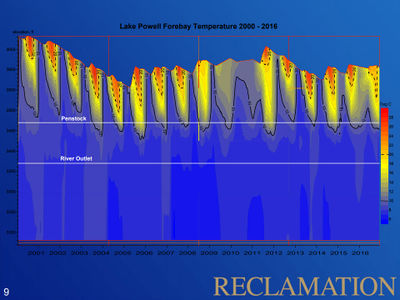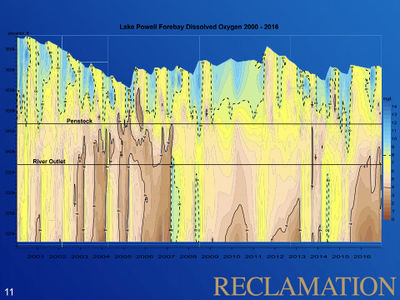Difference between revisions of "WATER QUALITY"
From Glen Canyon Dam AMP
Cellsworth (Talk | contribs) |
Cellsworth (Talk | contribs) |
||
| Line 142: | Line 142: | ||
'''2017''' | '''2017''' | ||
| + | *[http://dx.doi.org/10.1002/lom3.10204 Payn et al., 2017, A coupled metabolic-hydraulic model and calibration scheme for estimating of whole-river metabolism during dynamic flow conditions: Limnology and Oceanography: Methods, v.15, no.10, p. 847-866] | ||
*[http://dx.doi.org/10.1002/lno.10726 Bernhardt et al. 2017. The metabolic regimes of flowing waters: Limnology and Oceanography] | *[http://dx.doi.org/10.1002/lno.10726 Bernhardt et al. 2017. The metabolic regimes of flowing waters: Limnology and Oceanography] | ||
*[https://www.usbr.gov/uc/rm/amp/twg/mtgs/17jan26/AR4_Radtke.pdf Water Quality in Lake Powell and Its Influence on the Colorado River Below Glen Canyon Dam PPT] | *[https://www.usbr.gov/uc/rm/amp/twg/mtgs/17jan26/AR4_Radtke.pdf Water Quality in Lake Powell and Its Influence on the Colorado River Below Glen Canyon Dam PPT] | ||
Revision as of 16:21, 14 November 2017
|
|
Desired Future Condition for Water QualityWater quality with regards to dissolved oxygen, nutrient concentrations and cycling, turbidity, temperature, etc., is sufficient to support natural ecosystem functions, visitor safety and visitor experience to the extent feasible and consistent with the life history requirements of focal aquatic species. |
| --- |
--- |
--- |
|---|


